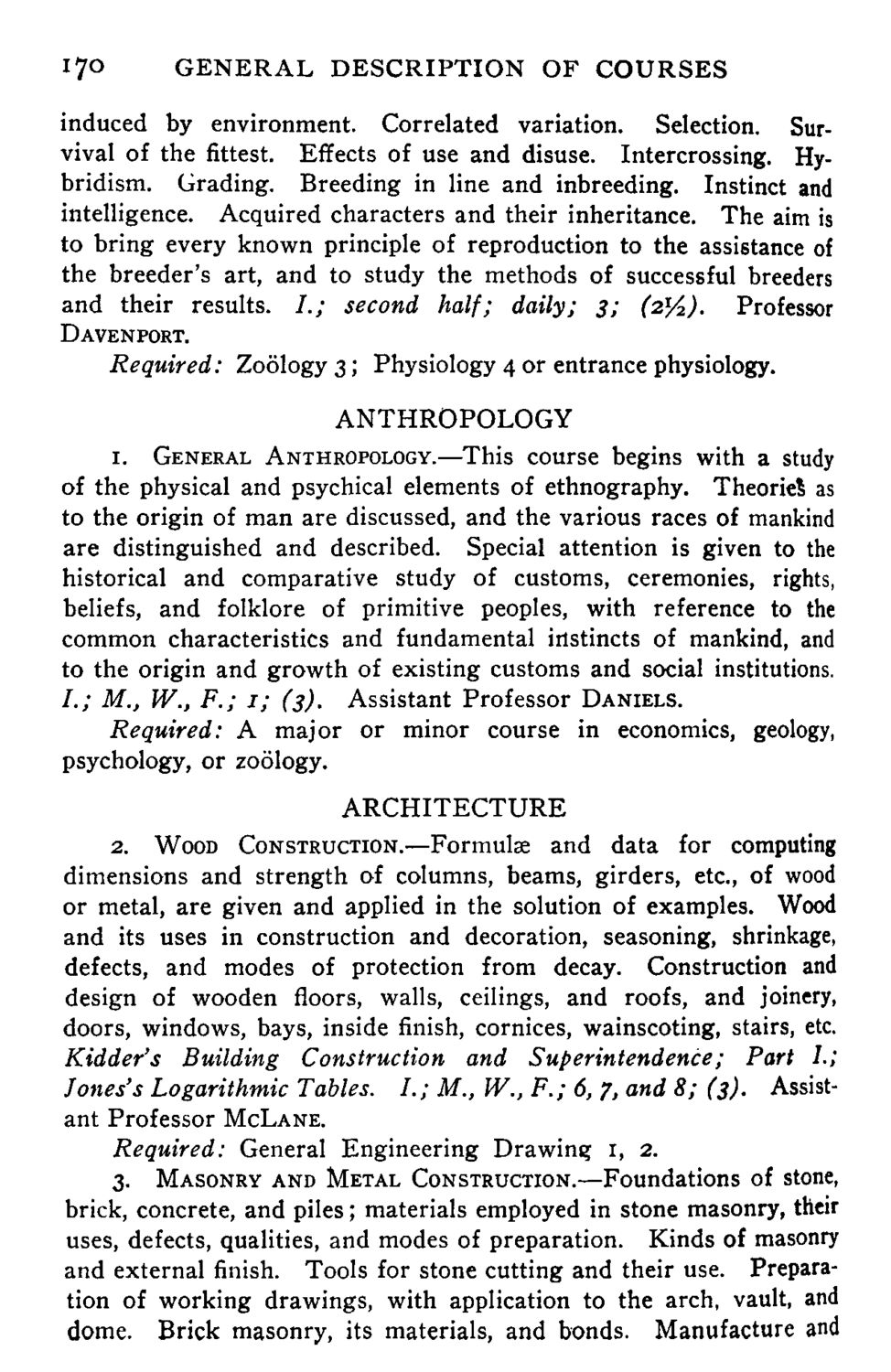| |
| |
Caption: Course Catalog - 1898-1899
This is a reduced-resolution page image for fast online browsing.

EXTRACTED TEXT FROM PAGE:
17° GENERAL DESCRIPTION OF COURSES induced by environment. Correlated variation. Selection. Survival of the fittest. Effects of use and disuse. Intercrossing. Hybridism. Grading. Breeding in line and inbreeding. Instinct and intelligence. Acquired characters and their inheritance. The aim is to bring every known principle of reproduction to the assistance of the breeder's art, and to study the methods of successful breeders and their results. / . ; second half; daily; 3; (2Y2). Professor DAVENPORT. Required: Zoology 3; Physiology 4 or entrance physiology. ANTHROPOLOGY 1. GENERAL ANTHROPOLOGY.—This course begins with a study of the physical and psychical elements of ethnography. Theories as to the origin of man are discussed, and the various races of mankind are distinguished and described. Special attention is given to the historical and comparative study of customs, ceremonies, rights, beliefs, and folklore of primitive peoples, with reference to the common characteristics and fundamental instincts of mankind, and to the origin and growth of existing customs and social institutions. / . ; M., W., F.; 1; (3). Assistant Professor DANIELS. Required: A major or minor course in economics, geology, psychology, or zoology. ARCHITECTURE 2. WOOD CONSTRUCTION.—Formulae and data for computing dimensions and strength of columns, beams, girders, etc., of wood or metal, are given and applied in the solution of examples. Wood and its uses in construction and decoration, seasoning, shrinkage, defects, and modes of protection from decay. Construction and design of wooden floors, walls, ceilings, and roofs, and joinery, doors, windows, bays, inside finish, cornices, wainscoting, stairs, etc. Kidder's Building Construction and Superintendence; Part I.; Jones's Logarithmic Tables. I.; M., W., F.; 6, 7, and 8; (3). Assistant Professor MCLANE. Required: General Engineering Drawing I, 2. 3. MASONRY AND METAL CONSTRUCTION.—Foundations of stone, brick, concrete, and piles; materials employed in stone masonry, their uses, defects, qualities, and modes of preparation. Kinds of masonry and external finish. Tools for stone cutting and their use. Preparation of working drawings, with application to the arch, vault, and dome. Brick masonry, its materials, and bonds. Manufacture and
| |